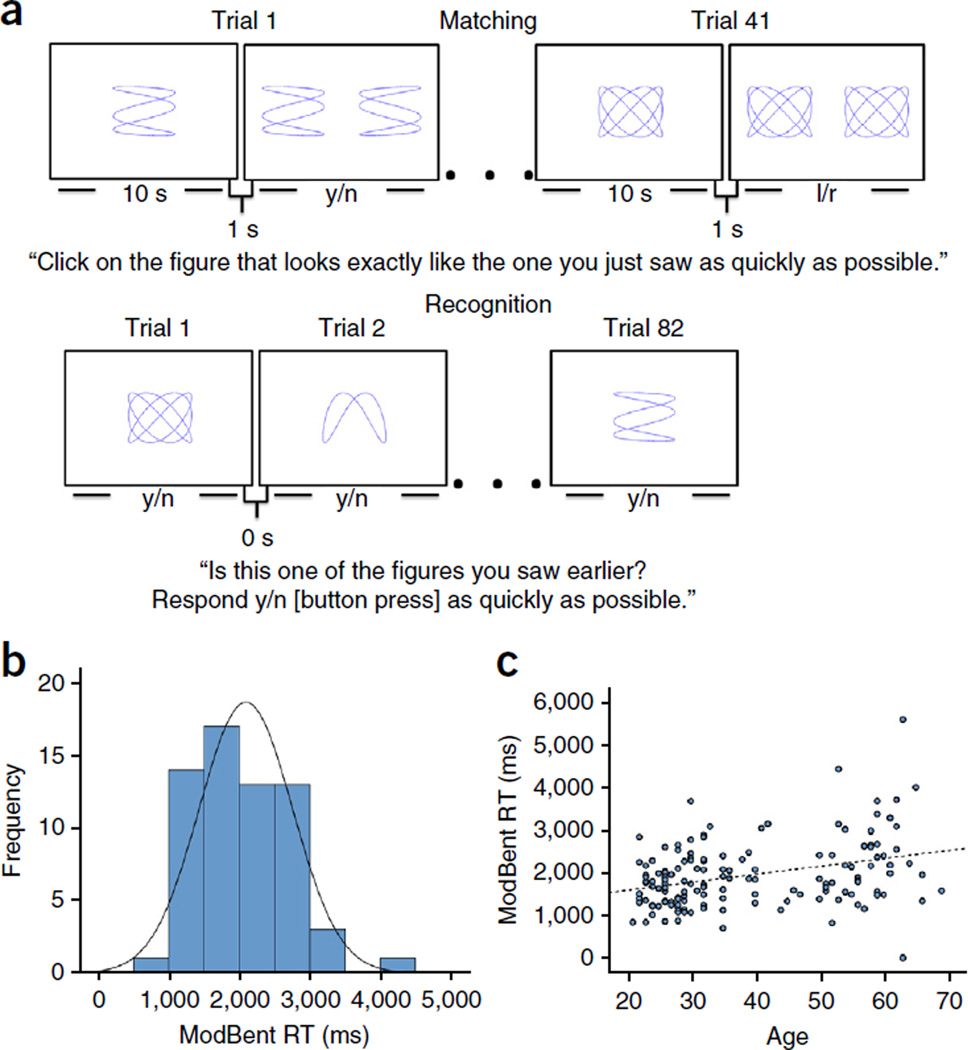Figure 3.
Performance on the ModBent declines with age. (a) The ModBent task is divided into two parts. During the matching trials (top), participants were shown a complex stimulus for 10 s. Following a 1-s inter-trial interval, they were required to select, via a key press, which of two stimuli matched the one they had just studied, as quickly and as accurately as possible. Following 41 matching trials, participants were shown a series of 82 stimuli (bottom), 41 of which appeared on the initial study set during the matching trials and 41 of which were foils. They were required to indicate, as quickly as possible, whether each stimulus appeared earlier (yes response) or was new (no response). The primary variable of the ModBent task is the mean RT for correct rejections of foils during the recognition trials. (b) As part of the task development, the ModBent was administered to 62 undergraduate students (mean age = 21.1 ± 0.80 years). Performance was normally distributed (Kolmogorov-Smirnov test statistic (62) = 0.091, P = 0.20), as shown. A subset of participants were tested following a 3-month interval and good test–re-test reliability was achieved (ICC = 0.743). (c) When applied to 149 healthy subjects across the adult life span (ages 21–69 years), performance on the ModBent (reaction time in correctly rejecting foil items) worsened with age (β = 22.31, P < 0.001).

